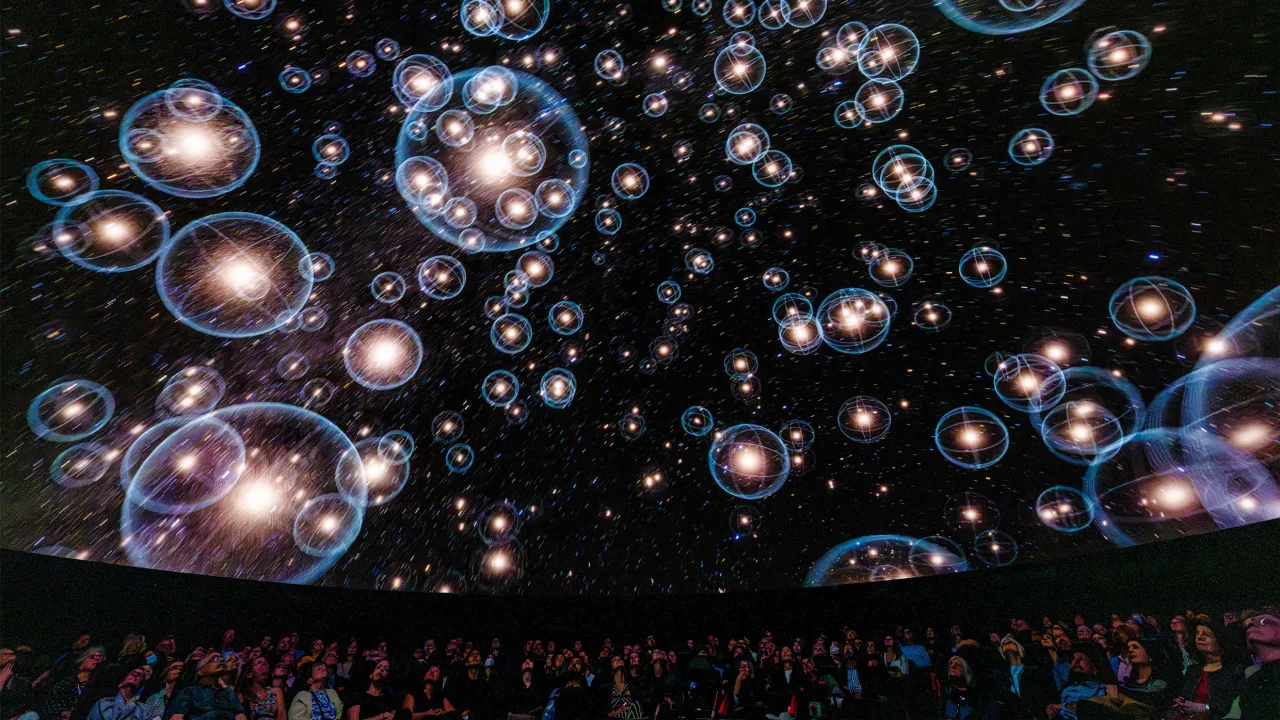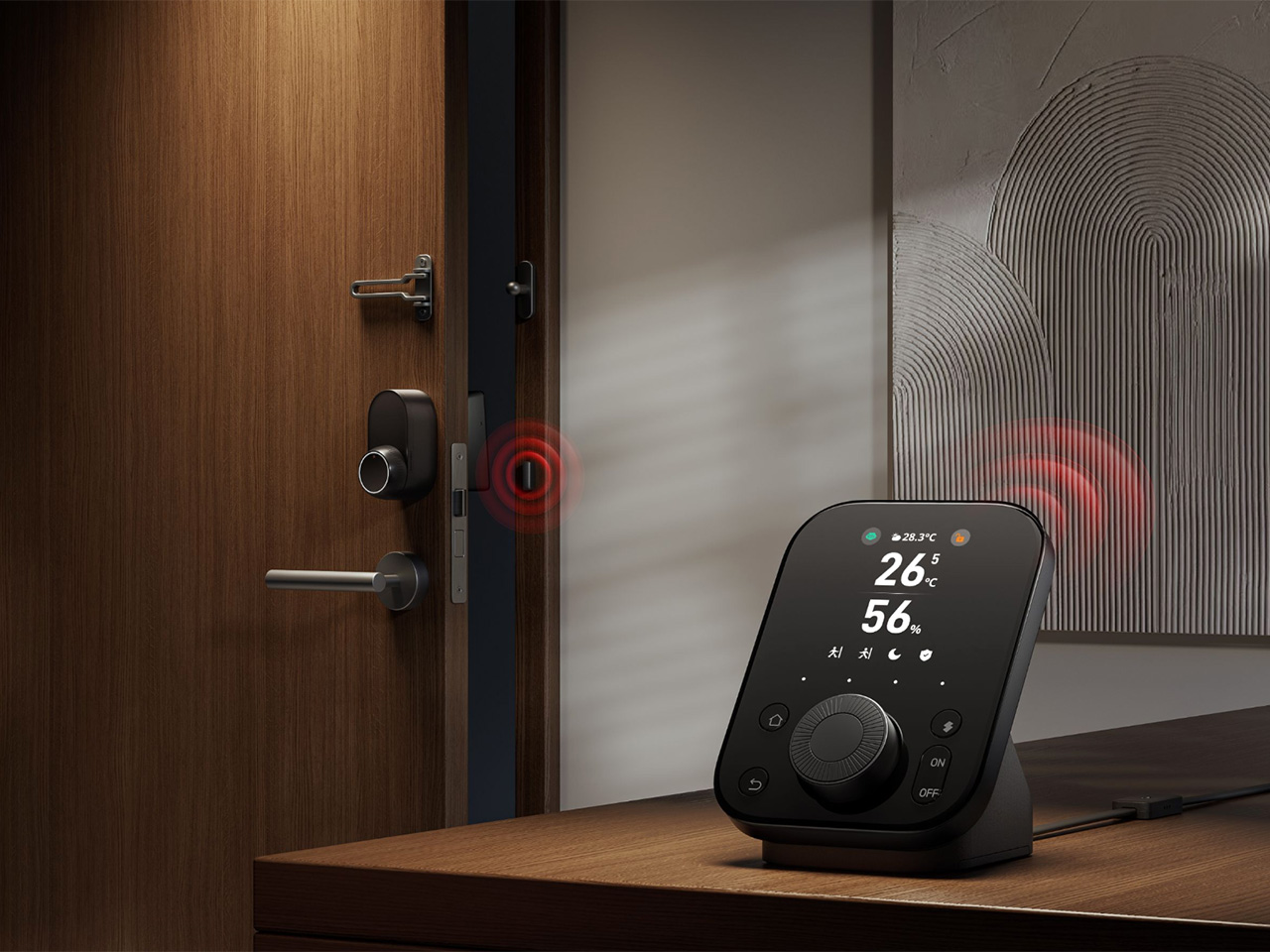Op-ed: Canada’s leadership in solar air heating—Innovation and flagship projects
Solar air heating is among the most cost-effective applications of solar thermal energy. These systems are used for space heating and preheating fresh air for ventilation, typically using glazed or unglazed perforated solar collectors. The collectors draw in outside air, heat it using solar energy, and then distribute it through ductwork to meet building heating and fresh air needs. In 2024, Canada led again the world for the at least seventh year in a row in solar air heating adoption. The four key suppliers – Trigo Energies, Conserval Engineering, Matrix Energy, and Aéronergie – reported a combined 26,203 m2of collector area sold last year. Several of these providers are optimistic about the growing demand. These findings come from the newly released Canadian Solar Thermal Market Survey 2024, commissioned by Natural Resources Canada.
Canada is the global leader in solar air heating. The market is driven by a strong network of experienced system suppliers, optimized technologies, and a few small favorable funding programs – especially in the province of Quebec. Architects and developers are increasingly turning to these cost-effective, façade-integrated systems as a practical solution for reducing onsite natural gas consumption.
Despite its cold climate, Canada benefits from strong solar potential with solar irradiance in many areas rivaling or even exceeding that of parts of Europe. This makes solar air heating not only viable, but especially valuable in buildings with high fresh air requirements including schools, hospitals, and offices. The projects highlighted in this article showcase the versatility and relevance of solar air heating across a range of building types, from new constructions to retrofits.
Figure 1: Preheating air for industrial buildings: 2,750 m2of Calento SL solar air collectors cover all south-west and south-east facing facades of the FAB3R factory in Trois-Rivières, Quebec. The hourly unitary flow rate is set at 41 m3/m2 or 2.23 cfm/ft2 of collector area, at the lower range because only a limited number of intake fans was close enough to the solar façade to avoid long ventilation ductwork. Photo: Trigo Energies
Quebec’s solar air heating boom: the Trigo Energies story
Trigo Energies makes almost 90 per cent of its sales in Quebec. “We profit from great subsidies, as solar air systems are supported by several organizations in our province – the electricity utility Hydro Quebec, the gas utility Energir and the Ministry of Natural Resources,” explained Christian Vachon, Vice President Technologies and R&D at Trigo Energies.
Trigo Energies currently has nine employees directly involved in planning, engineering and installing solar air heating systems and teams up with several partner contractors to install mostly retrofit projects. “A high degree of engineering is required to fit a solar heating system into an existing factory,” emphasized Vachon. “Knowledge about HVAC engineering is as important as experience with solar thermal and architecture.”
One recent Trigo installation is at the FAB3R factory in Trois-Rivières. FAB3R specializes in manufacturing, repairing, and refurbishing large industrial equipment. Its air heating and ventilation system needed urgent renovation because of leakages and discomfort for the workers. “Due to many positive references he had from industries in the area, the owner of FAB3R contacted us,” explained Vachon. “The existence of subsidies helped the client to go for a retrofitting project including solar façade at once instead of fixing the problems one bit at a time.” Approximately 50 per cent of the investment costs for both the solar air heating and the renovation of the indoor ventilation system were covered by grants and subsidies. FAB3R profited from an Energir grant targeted at solar preheating, plus an investment subsidy from the Government of Quebec’s EcoPerformance Programme.
Blue or black, but always efficient: the advanced absorber coating
In October 2024, the majority of the new 2,750 m²solar façade at FAB3R began operation. According to Vachon, the system is expected to cover approximately 13 per cent of the factory’s annual heating demand, which is otherwise met by natural gas. Trigo Energies equipped the façade with its high-performance Calento SL collectors, featuring a notable innovation: a selective, low-emissivity coating that withstands outdoor conditions. Introduced by Trigo in 2019 and manufactured by Almeco Group from Italy, this advanced coating is engineered to maximize solar absorption while minimizing heat loss via infrared emission, enhancing the overall efficiency of the system.
The high efficiency coating is now standard in Trigo’s air heating systems. According to the manufacturer, the improved collector design shows a 25 to 35 per cent increase in yield over the former generation of solar air collectors with black paint. Testing conducted at Queen’s University confirms this performance advantage. Researchers measured the performance of transpired solar air collectors both with and without a selective coating, mounted side-by-side on a south-facing vertical wall. The results showed that the collectors with the selective coating produced 1.3 to 1.5 times more energy than those without it. In 2024, the monitoring results were jointly published by Queen’s University and Canmat Energy in a paper titled Performance Comparison of a Transpired Air Solar Collector with Low-E Surface Coating.
Selective coating, also used on other solar thermal technologies including glazed flat plate or vacuum tube collectors, has a distinctive blue color. Trigo customers can, however, choose between blue and black finishes. “By going from the normal blue selective coating to black selective coating, which Almeco is specially producing for Trigo, we lose about 1 per cent in solar efficiency,” explained Vachon.
Figure 2: Building-integrated solar air heating façade with MatrixAir collectors at the firehall building in Mont Saint Hilaire, south of Montreal. The 190 m2south-facing wall preheats the fresh air, reducing natural gas consumption by 18 per cent compared to the conventional make-up system. Architect: Leclerc Architecture. Photo: Matrix Energy
Matrix Energy: collaborating with architects and engineers in new builds
The key target customer group of Matrix Energy are public buildings – mainly new construction. “Since the pandemic, schools are more conscious about fresh air, and solar preheating of the incoming fresh air has a positive impact over the entire school year,” noted Brian Wilkinson, President of Matrix Energy.
Matrix Energy supplies systems across Canada, working with local partners to source and process the metal sheets used in their MatrixAir collectors. These metal sheets are perforated and then formed into architectural cladding profiles. The company exclusively offers unglazed, single-stage collectors, citing fire safety concerns associated with polymeric covers.
“We have strong relationships with many architects and engineers who appreciate the simplicity and cost-effectiveness of transpired solar air heating systems,” said President Brian Wilkinson, describing the company’s sales approach. “Matrix handles system design and supplies the necessary materials, while installation is carried out by specialized cladding and HVAC contractors overseen by on-site architects and engineers,” Wilkinson added.
Finding the right flow: the importance of unitary airflow rates
One of the key design factors in solar air heating systems is the amount of air that passes through each square meter of the perforated metal absorber, known as the unitary airflow rate. The principle is straightforward: higher airflow rates deliver more total heat to the building, while lower flow rates result in higher outlet air temperatures. Striking the right balance between air volume and temperature gain is essential for efficient system performance.
For unglazed collectors mounted on building façades, typical hourly flow rates should range between 120 and 170, or 6.6 to 9.4 cfm/ft2. However, Wilkinson suggests that an hourly airflow rate of around 130 m³/h/m²offers the best cost-benefit balance for building owners. If the airflow is lower, the system will deliver higher air temperatures, but it would then need a much larger collector area to achieve the same air volume and optimum performance, he explained.
It’s also crucial for the flow rate to overcome external wind pressure. As wind passes over the absorber, air flow through the collector’s perforations is reduced, resulting in heat losses to the environment. This effect becomes even more pronounced in taller buildings, where wind exposure is greater. To ensure the system performs well even in these conditions, higher hourly airflow rates typically between 150 and 170 m³/m² are necessary.
Figure 3: One of three apartment blocks of the Maple House in Toronto’s Canary District. Around 160 m2of SolarWall collectors clad the two-storey mechanical penthouse on the roof. The rental flats have been occupied since the beginning of 2024. Collaborators: architects-Alliance, Claude Cormier et Associés, Thornton Tomasetti, RWDI, Cole Engineering, DesignAgency, MVShore, BA Group, EllisDon. Photo: Conserval Engineering
Solar air heating systems support LEED-certified building designs
Solar air collectors are also well-suited for use in multi-unit residential buildings. A prime example is the Canary District in Toronto, where single-stage SolarWall collectors from Conserval Engineering have been installed on several MURBs to clad the mechanical penthouses. “These penthouses are an ideal location for our air heating collectors, as they contain the make-up air units that supply corridor ventilation throughout the building,” explained Victoria Hollick, Vice President of Conserval Engineering. “The walls are typically finished with metal façades, which can be seamlessly replaced with a SolarWall system – maintaining the architectural language without disruption.” To date, nine solar air heating systems have been commissioned in the Canary District, covering a total collector area of over 1,000 m².
“Our customers have many motivations to integrate SolarWall technology into their new construction or retrofit projects, either carbon reduction, ESG, or green building certification targets,” explained Hollick.
The use of solar air collectors in the Canary District was proposed by architects from the Danish firm Cobe. The black-colored SolarWall system preheats incoming air before it is distributed to the building’s corridors and common areas, reducing reliance on natural gas heating and supporting the pursuit of LEED Gold certification. Hollick estimates the amount of gas saved between 10 to 20 per cent of the total heating load for the corridor ventilation of the multi-unit residential buildings. Additional energy-saving strategies include a 50/50 window-to-wall ratio with high-performance glazing, green roofs, high-efficiency mechanical systems, LED lighting, and Energy Star-certified appliances.
The ideal orientation for a SolarWall system is due south. However, the systems can be built at any orientation up to 90° east and west, explained Hollick. A SolarWall at 90° would have approximately 60 per cent of the energy production of the same area facing south.Canada’s expertise in solar air heating continues to set a global benchmark, driven by supporting R&D, by innovative technologies, strategic partnerships, and a growing portfolio of high-impact projects. With strong policy support and proven performance, solar air heating is poised to play a key role in the country’s energy-efficient building future.
Figure 4: Claude-Bechard Building in Quebec is a showcase project for sustainable architecture with a 72 m2Lubi solar air heating wall from Aéronergie. It serves as a regional administrative center. Architectural firm: Goulet et Lebel Architectes. Photo: Art Massif
Bärbel Epp is the general manager of the German Agency solrico, whose focus is on solar market research and international communication.
The post Op-ed: Canada’s leadership in solar air heating—Innovation and flagship projects appeared first on Canadian Architect.
#oped #canadas #leadership #solar #air
Op-ed: Canada’s leadership in solar air heating—Innovation and flagship projects
Solar air heating is among the most cost-effective applications of solar thermal energy. These systems are used for space heating and preheating fresh air for ventilation, typically using glazed or unglazed perforated solar collectors. The collectors draw in outside air, heat it using solar energy, and then distribute it through ductwork to meet building heating and fresh air needs. In 2024, Canada led again the world for the at least seventh year in a row in solar air heating adoption. The four key suppliers – Trigo Energies, Conserval Engineering, Matrix Energy, and Aéronergie – reported a combined 26,203 m2of collector area sold last year. Several of these providers are optimistic about the growing demand. These findings come from the newly released Canadian Solar Thermal Market Survey 2024, commissioned by Natural Resources Canada.
Canada is the global leader in solar air heating. The market is driven by a strong network of experienced system suppliers, optimized technologies, and a few small favorable funding programs – especially in the province of Quebec. Architects and developers are increasingly turning to these cost-effective, façade-integrated systems as a practical solution for reducing onsite natural gas consumption.
Despite its cold climate, Canada benefits from strong solar potential with solar irradiance in many areas rivaling or even exceeding that of parts of Europe. This makes solar air heating not only viable, but especially valuable in buildings with high fresh air requirements including schools, hospitals, and offices. The projects highlighted in this article showcase the versatility and relevance of solar air heating across a range of building types, from new constructions to retrofits.
Figure 1: Preheating air for industrial buildings: 2,750 m2of Calento SL solar air collectors cover all south-west and south-east facing facades of the FAB3R factory in Trois-Rivières, Quebec. The hourly unitary flow rate is set at 41 m3/m2 or 2.23 cfm/ft2 of collector area, at the lower range because only a limited number of intake fans was close enough to the solar façade to avoid long ventilation ductwork. Photo: Trigo Energies
Quebec’s solar air heating boom: the Trigo Energies story
Trigo Energies makes almost 90 per cent of its sales in Quebec. “We profit from great subsidies, as solar air systems are supported by several organizations in our province – the electricity utility Hydro Quebec, the gas utility Energir and the Ministry of Natural Resources,” explained Christian Vachon, Vice President Technologies and R&D at Trigo Energies.
Trigo Energies currently has nine employees directly involved in planning, engineering and installing solar air heating systems and teams up with several partner contractors to install mostly retrofit projects. “A high degree of engineering is required to fit a solar heating system into an existing factory,” emphasized Vachon. “Knowledge about HVAC engineering is as important as experience with solar thermal and architecture.”
One recent Trigo installation is at the FAB3R factory in Trois-Rivières. FAB3R specializes in manufacturing, repairing, and refurbishing large industrial equipment. Its air heating and ventilation system needed urgent renovation because of leakages and discomfort for the workers. “Due to many positive references he had from industries in the area, the owner of FAB3R contacted us,” explained Vachon. “The existence of subsidies helped the client to go for a retrofitting project including solar façade at once instead of fixing the problems one bit at a time.” Approximately 50 per cent of the investment costs for both the solar air heating and the renovation of the indoor ventilation system were covered by grants and subsidies. FAB3R profited from an Energir grant targeted at solar preheating, plus an investment subsidy from the Government of Quebec’s EcoPerformance Programme.
Blue or black, but always efficient: the advanced absorber coating
In October 2024, the majority of the new 2,750 m²solar façade at FAB3R began operation. According to Vachon, the system is expected to cover approximately 13 per cent of the factory’s annual heating demand, which is otherwise met by natural gas. Trigo Energies equipped the façade with its high-performance Calento SL collectors, featuring a notable innovation: a selective, low-emissivity coating that withstands outdoor conditions. Introduced by Trigo in 2019 and manufactured by Almeco Group from Italy, this advanced coating is engineered to maximize solar absorption while minimizing heat loss via infrared emission, enhancing the overall efficiency of the system.
The high efficiency coating is now standard in Trigo’s air heating systems. According to the manufacturer, the improved collector design shows a 25 to 35 per cent increase in yield over the former generation of solar air collectors with black paint. Testing conducted at Queen’s University confirms this performance advantage. Researchers measured the performance of transpired solar air collectors both with and without a selective coating, mounted side-by-side on a south-facing vertical wall. The results showed that the collectors with the selective coating produced 1.3 to 1.5 times more energy than those without it. In 2024, the monitoring results were jointly published by Queen’s University and Canmat Energy in a paper titled Performance Comparison of a Transpired Air Solar Collector with Low-E Surface Coating.
Selective coating, also used on other solar thermal technologies including glazed flat plate or vacuum tube collectors, has a distinctive blue color. Trigo customers can, however, choose between blue and black finishes. “By going from the normal blue selective coating to black selective coating, which Almeco is specially producing for Trigo, we lose about 1 per cent in solar efficiency,” explained Vachon.
Figure 2: Building-integrated solar air heating façade with MatrixAir collectors at the firehall building in Mont Saint Hilaire, south of Montreal. The 190 m2south-facing wall preheats the fresh air, reducing natural gas consumption by 18 per cent compared to the conventional make-up system. Architect: Leclerc Architecture. Photo: Matrix Energy
Matrix Energy: collaborating with architects and engineers in new builds
The key target customer group of Matrix Energy are public buildings – mainly new construction. “Since the pandemic, schools are more conscious about fresh air, and solar preheating of the incoming fresh air has a positive impact over the entire school year,” noted Brian Wilkinson, President of Matrix Energy.
Matrix Energy supplies systems across Canada, working with local partners to source and process the metal sheets used in their MatrixAir collectors. These metal sheets are perforated and then formed into architectural cladding profiles. The company exclusively offers unglazed, single-stage collectors, citing fire safety concerns associated with polymeric covers.
“We have strong relationships with many architects and engineers who appreciate the simplicity and cost-effectiveness of transpired solar air heating systems,” said President Brian Wilkinson, describing the company’s sales approach. “Matrix handles system design and supplies the necessary materials, while installation is carried out by specialized cladding and HVAC contractors overseen by on-site architects and engineers,” Wilkinson added.
Finding the right flow: the importance of unitary airflow rates
One of the key design factors in solar air heating systems is the amount of air that passes through each square meter of the perforated metal absorber, known as the unitary airflow rate. The principle is straightforward: higher airflow rates deliver more total heat to the building, while lower flow rates result in higher outlet air temperatures. Striking the right balance between air volume and temperature gain is essential for efficient system performance.
For unglazed collectors mounted on building façades, typical hourly flow rates should range between 120 and 170, or 6.6 to 9.4 cfm/ft2. However, Wilkinson suggests that an hourly airflow rate of around 130 m³/h/m²offers the best cost-benefit balance for building owners. If the airflow is lower, the system will deliver higher air temperatures, but it would then need a much larger collector area to achieve the same air volume and optimum performance, he explained.
It’s also crucial for the flow rate to overcome external wind pressure. As wind passes over the absorber, air flow through the collector’s perforations is reduced, resulting in heat losses to the environment. This effect becomes even more pronounced in taller buildings, where wind exposure is greater. To ensure the system performs well even in these conditions, higher hourly airflow rates typically between 150 and 170 m³/m² are necessary.
Figure 3: One of three apartment blocks of the Maple House in Toronto’s Canary District. Around 160 m2of SolarWall collectors clad the two-storey mechanical penthouse on the roof. The rental flats have been occupied since the beginning of 2024. Collaborators: architects-Alliance, Claude Cormier et Associés, Thornton Tomasetti, RWDI, Cole Engineering, DesignAgency, MVShore, BA Group, EllisDon. Photo: Conserval Engineering
Solar air heating systems support LEED-certified building designs
Solar air collectors are also well-suited for use in multi-unit residential buildings. A prime example is the Canary District in Toronto, where single-stage SolarWall collectors from Conserval Engineering have been installed on several MURBs to clad the mechanical penthouses. “These penthouses are an ideal location for our air heating collectors, as they contain the make-up air units that supply corridor ventilation throughout the building,” explained Victoria Hollick, Vice President of Conserval Engineering. “The walls are typically finished with metal façades, which can be seamlessly replaced with a SolarWall system – maintaining the architectural language without disruption.” To date, nine solar air heating systems have been commissioned in the Canary District, covering a total collector area of over 1,000 m².
“Our customers have many motivations to integrate SolarWall technology into their new construction or retrofit projects, either carbon reduction, ESG, or green building certification targets,” explained Hollick.
The use of solar air collectors in the Canary District was proposed by architects from the Danish firm Cobe. The black-colored SolarWall system preheats incoming air before it is distributed to the building’s corridors and common areas, reducing reliance on natural gas heating and supporting the pursuit of LEED Gold certification. Hollick estimates the amount of gas saved between 10 to 20 per cent of the total heating load for the corridor ventilation of the multi-unit residential buildings. Additional energy-saving strategies include a 50/50 window-to-wall ratio with high-performance glazing, green roofs, high-efficiency mechanical systems, LED lighting, and Energy Star-certified appliances.
The ideal orientation for a SolarWall system is due south. However, the systems can be built at any orientation up to 90° east and west, explained Hollick. A SolarWall at 90° would have approximately 60 per cent of the energy production of the same area facing south.Canada’s expertise in solar air heating continues to set a global benchmark, driven by supporting R&D, by innovative technologies, strategic partnerships, and a growing portfolio of high-impact projects. With strong policy support and proven performance, solar air heating is poised to play a key role in the country’s energy-efficient building future.
Figure 4: Claude-Bechard Building in Quebec is a showcase project for sustainable architecture with a 72 m2Lubi solar air heating wall from Aéronergie. It serves as a regional administrative center. Architectural firm: Goulet et Lebel Architectes. Photo: Art Massif
Bärbel Epp is the general manager of the German Agency solrico, whose focus is on solar market research and international communication.
The post Op-ed: Canada’s leadership in solar air heating—Innovation and flagship projects appeared first on Canadian Architect.
#oped #canadas #leadership #solar #air
0 Reacties
·0 aandelen
·0 voorbeeld
















